Here, we discuss how swim bladder disease in fish varies in severity and treatment depends on the cause. It’s non-contagious, with symptoms like impaired buoyancy and bloating. Treatments include adjusting water parameters, dietary changes, and antibiotics. Some fish recover quickly, while others may need euthanasia. Preventive measures include maintaining clean tanks, optimal water temperature, and proper feeding practices.
Despite their size, shape, color, and breed, Pets are loved by their owner. No pet owner wants to ever see their pet struggle physically. Unfortunately, when it comes to keeping fish as a pet, there are several complications to look out for. Infections and fin damage are common and so is the swim bladder disease.
Although not a very prevalent condition, the swim bladder disease affects different varieties of fish. The condition is fatal if not treated with the right medical interventions. We have all the information if you are sitting here confused about how long a fish can live with swim bladder disease.
This article will explore more about swim bladder disorder, the symptoms, causes, and the remedial solutions.
Table of Contents
What is Swim Bladder Disease in Fish?
Swim bladder disease in fish is a condition affecting their swim bladder, an internal gas-filled organ that helps maintain buoyancy. It can be caused by various factors, including bacterial infections, physical trauma, congenital defects, or environmental issues. The disease manifests as difficulty in maintaining normal position in the water, either floating involuntarily to the top or sinking to the bottom.
The swim bladder is a crucial gas-filled internal organ present inside a fish. It supports the fish’s buoyancy and helps them swim in the water comfortably.
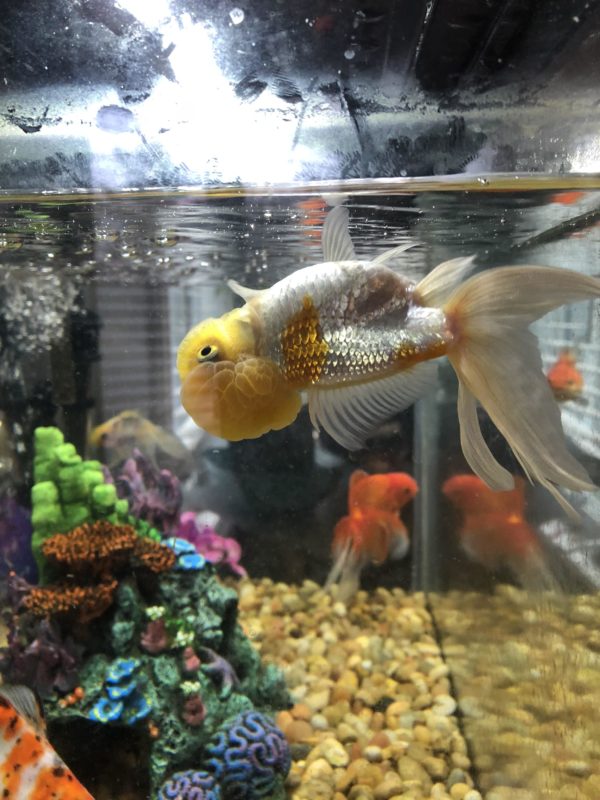
The swim bladder disorder is a collection of diseases that affect the basic functioning of the swim bladder in the fish. It is quite a severe condition, resulting in fatal outcomes if not treated on time.
Although the disease is very widespread, it predominantly affects bettas and goldfish. So if you are a beginner aquarist worried about the condition being a death sentence – don’t.
Swim bladder disorder is a treatable disease if you can detect the problem in time. However, the condition is often relayed due to physical, environmental, or mechanical abnormalities in the fish’s swim bladder.
Fish affected by this condition have impaired buoyancy, which alters their ability to float or sink in the water body they are in.
Can A Fish Recover from Swim Bladder Disease?
A swim bladder disease is either permanent or temporary. However, even with a permanent disorder, a fish can live a comfortable and healthy life.
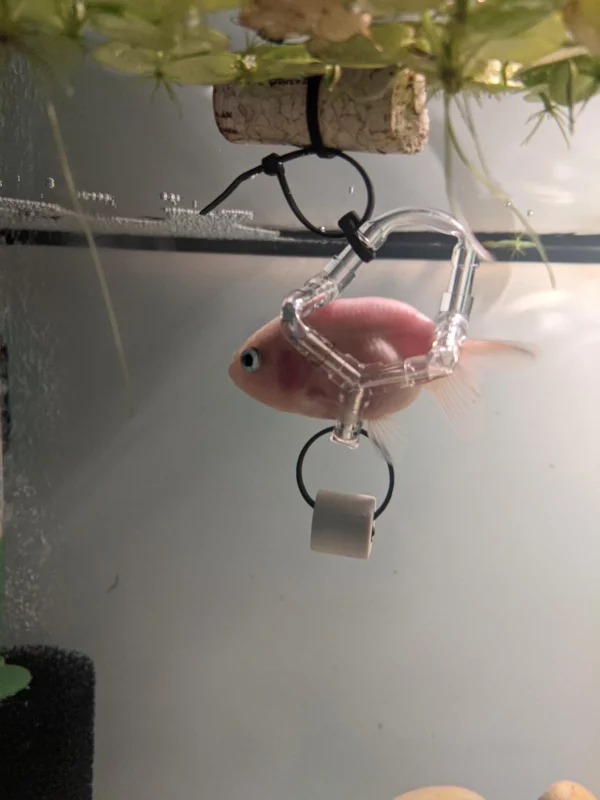
However, in most fish species and instances, the swim bladder disease is temporary. The affected fish needs an X-ray for a formal diagnosis. The X-ray can detect the size of the swim bladder and any abnormalities present around it.
Depending on the contributing causes, the vet can write the treatment route, which should clear and treat the affected fish.
Can Swim Bladder Disease Spread to Other Fish?
A swim bladder disorder is non-contagious. However, if the condition is due to a prevalent infection in the affected fish, we’d recommend separating them from the tank.
Not doing so can spread the infection to the other fish in the tank, worsening the condition. Also, moving the affected fish to a separate rehabilitation tank enables them to recover a lot quicker.
Can Fish Die from Swim Bladder Disease?
Bacterial infections that lead to swim bladder disorder could be a reason behind the death of the fish. These infections are often very hard to treat, making it difficult for the fish to swim freely and live a comfortable life.
However, we’d recommend trying anti-bacterial treatments for the tank water, including Melafix, before giving up entirely.
What Causes Swim Bladder in Fish?
Swim bladder disease in fish is caused by factors like poor water quality, overfeeding, bacterial infections, and physical abnormalities. Ensuring good water conditions and proper diet helps prevent it.
Swim bladder disease isn’t a “single” disease. Instead, it is a type of disorder that involves several diseases in it. Physical, environmental, and even feeding complications can lead to this problem.
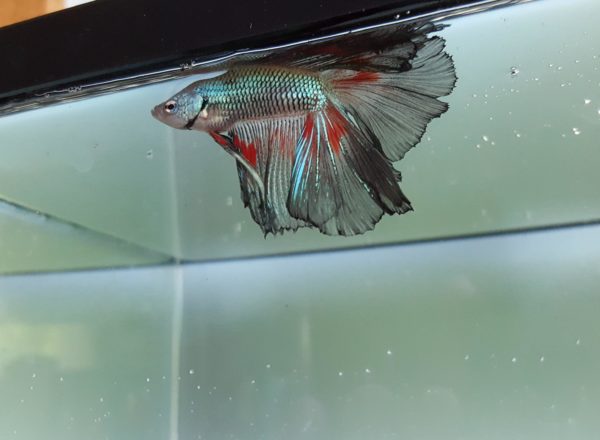
Some of the possible causes include:
Feeding habits
Fish species that rapidly feed or overeat in a small-time are at heightened risk of having a swimbladder disorder. When a fish rapidly gobbles down their food, they also ingest a lot of air. This leads to the displacement of the swim bladder inside their bodies.
Also, bloating in the abdomen due to excessive dried and flaky fish foods is a reason to blame. When the dried foods come in contact with water, they expand and lead to risks of bloating.
Enlarged abdominal organs
Sudden enlargement of the abdominal organs can directly impact the swim bladder. In addition, the prevalence of cysts and tumors in the abdomen could also be a contributing factor.
Other possible causes include excess fatty deposits on the liver and possible egg binding in some female fish during mating season.
Poor water parameters
Every fish requires optimal water temperature for its growth and well-being. However, having a lower water temperature than ideal can affect the digestive process in the fish species, leading to bloating.
Indigestion and bloating in the fish often contribute to swim bladder disorder in the long run. In addition, the direct pressure on the swim bladder temporarily impairs its functions.
Infections
Bacterial, viral, or parasitic infections are very common in home aquariums. These infections directly affect the swim bladder, especially impairing its functions.
Sometimes, an unknown injury to the fish also leads to possibilities of infection underwater. If you notice signs of infection in your fish, immediately treat them to contain the infection.
Birth defects
Although quite rare, there are fish species born with swim bladder disorders. These prevent them from swimming comfortably underwater. However, these conditions showcase their symptoms early, so you won’t have to worry about the symptoms popping up out of nowhere.
What Are the Symptoms of Swim Bladder Disease in Fish?
Symptoms of swim bladder disease in fish include difficulty maintaining buoyancy, floating upside down or at the surface, and sinking to the bottom. They may also show an abnormal posture or have a distended belly.
Detecting swim bladder disease in a fish is quite difficult, especially because the symptoms aren’t that profound. However, with experience and expertise, you should be able to distinguish between the symptoms. The most predominant symptom in the fish is the lack of buoyancy.
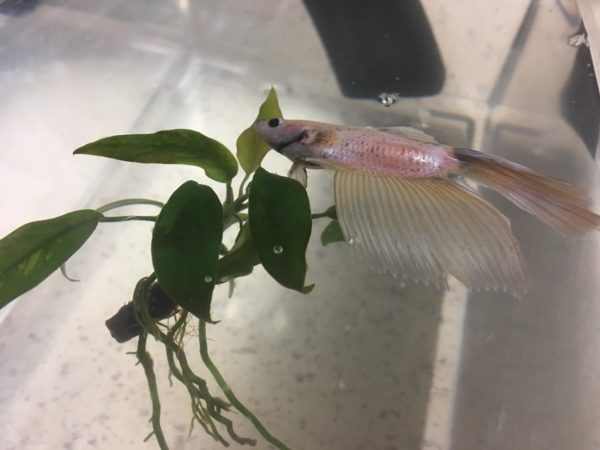
That aside, some of the other prevalent symptoms include:
Lack of optimal swimming – whether the fish is a bottom-feeder or surface feeder, they should swim accordingly. If you find the fish sinking to the bottom or floating on the top too often, it could signify swim bladder disorder.
Not staying upright – the fish’s buoyancy and balance keep them in a static position in the tank. The affected fish with swim bladder disease will have difficulty staying upright and will generally sink to the bottom or float.
Distended belly – indigestion and bloating directly pressure on the swim bladder, leading to the disorder. So, if you find the affected fish with a distended belly, it could be a sign of the swim bladder disorder.
Curved back – sudden displacement of the organs inside the fish’s body can lead to curving of the back in the affected fish. It is not a very common symptom and is prevalent in a handful of cases.
Lacking appetite – especially in bottom or surface feeders, the fish with swim bladder disorder will avoid eating. As a result, they find it hard to feel like their normal self, leading to malnourishment over time.
How Long Can a Fish Live with Swim Bladder Disease?
The prognosis for a swim bladder disease is variable. Some affected fish have it as a temporary condition only.
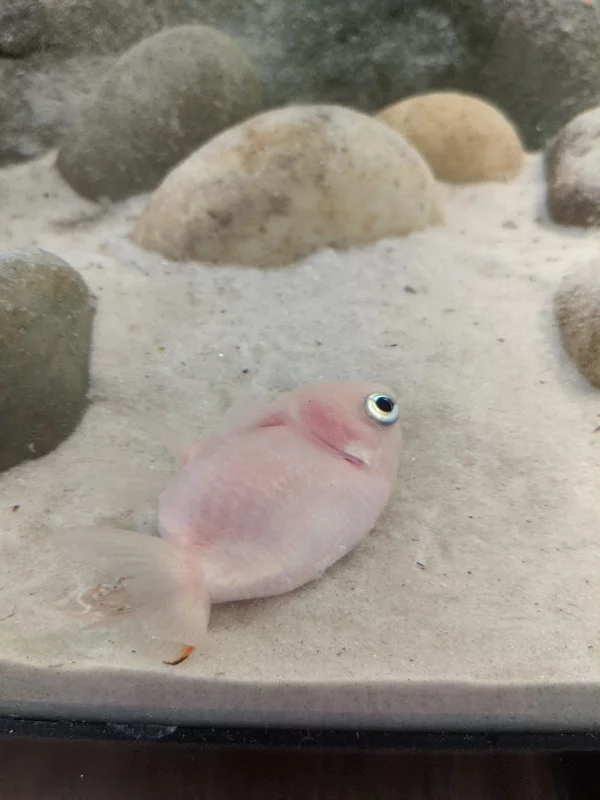
It is generally the cause that determines the severity. For example, if the condition is due to overeating or rapid eating, the condition will get better in a few hours to a day.
However, if the condition is due to infections or poor lifestyle and water parameters, the cure can be prolonged. Sometimes, it might not be curable too.
Fish affected with swim bladder disorder get treatment for their symptoms. This signifies that there is no direct treatment for the condition. Instead, it is the symptoms and the causes that are treated and rectified.
In most cases of infection, treatment over 1-2 weeks should show progress. If the fish still doesn’t respond to the treatment, it is ideal for euthanizing them.
How To Treat Swim Bladder Disease in Fish?
To treat swim bladder disease in fish, adjust the tank’s water parameters, feed a high-fiber diet, and consider antibiotics for bacterial causes. These steps can alleviate symptoms like impaired buoyancy and bloating.
The treatment for swim bladder disease often involves three routes – restoring water parameters, changing feeding patterns, and using antibiotics.
Here’s what you can do:
Look into the water temperature
Lower water temperature often leads to indigestion in the fish, which affects the swim bladder. Do this while fasting the fish for better results. Ideally, you’d want to keep the water temperature at 78-80 degrees Fahrenheit.
Treat the water with antibiotics
Another effective treatment option for swim bladder disorder is treating foul infection. It could be a parasitic, viral, or even bacterial infection. Consult your vet for a prescription of broad-spectrum antibiotics to see if it helps.

Focus on water changes
If your tank water isn’t clean, it could be a potential contributor to infections and, in turn, the swim bladder disease. The best way to overcome that complication would be by keeping the aquarium clean and in the best conditions.
Also, if your fish tends to gulp down a lot of air while eating, reduce the water levels in the tank. This can support the health of the fish in the long run.
Simultaneously, reduce the tank’s water current as well. Finally, treat the water with a water conditioner to reduce the water hardness. Also, use good-quality water changers to make the process easy.
Does Aquarium Salt Help Swim Bladder?
Aquarium salt is an effective way to reduce the intensity of infection in the aquarium water. The salt reduces the risks of infection and helps reduce the bloating in the fish by drawing excess water out of their bodies.
Always ensure to start with the lowest salinity of 0.3% and work your way up to 1.5% per gallon. Also, if possible, mix the salt with the water in a separate bucket and then add it gradually into the aquarium.
How Long Does Swim Bladder Treatment Take to Work?
If your fish has swim bladder disorder, we’d recommend waiting for two weeks to see if the treatments are working.
Sometimes, it’s a humane way to let your fish go and euthanize them instead of living such a painful life.
However, on the bright side, if the problem isn’t that severe, quick fasting or antibiotic treatment should cure the fish within a few days.
What Do You Feed a Fish with A Swim Bladder?
Since feeding habits often contribute to the swim bladder disorder, start by fasting your fish for three days.
Typically, fast your fish if the swim bladder disorder is due to a distended abdomen or common indigestion issues. However, since overeating is a common contributor to swim bladder disorder, it is ideal to leave them alone until they get their appetite again.
Do Peas Help Swim Bladder?
Green peas are a very handy food for treating swim bladder. They are easy to digest, light on the stomach, and have the proper consistency.
You can easily use frozen green peas and boil them for a few seconds before feeding them to the affected fish.
How can You Prevent Swim Bladder Disease in Fish?
Before you look into how to treat the swim bladder disease, look for preventive measures. After all, prevention is better than cure.
Some of the easy preventive measures include:
- Never leave your tank unclean. Not cleaning the tank frequently is a recipe for disaster, especially if you have sensitive fish species like goldfish and bettas. Instead, indulge in regular water changes from time to time.
- Avoid keeping the tank’s water temperature higher than normal. Keeping it too low will impair the digestive procedure of the fish.
- If your fish isn’t responding well to dried and flake fish foods, look for higher-quality food options. Live and brined foods and pellets make a good alternative.
- Never overfeed your fish. Run thorough research about the ideal feeding habits for each species before you start your feeding cycle.
Here is the complete guide how to Set-Up A Betta Aquarium Properly?
Wrapping Up
Swim bladder disorder isn’t a very common disease but requires immediate medical intervention. Although not contagious, the condition can alter the well-being of the affected fish and the ones around it. Follow the tips and treatment options we have shared in this guide to support quicker recovery for your affected pet.
